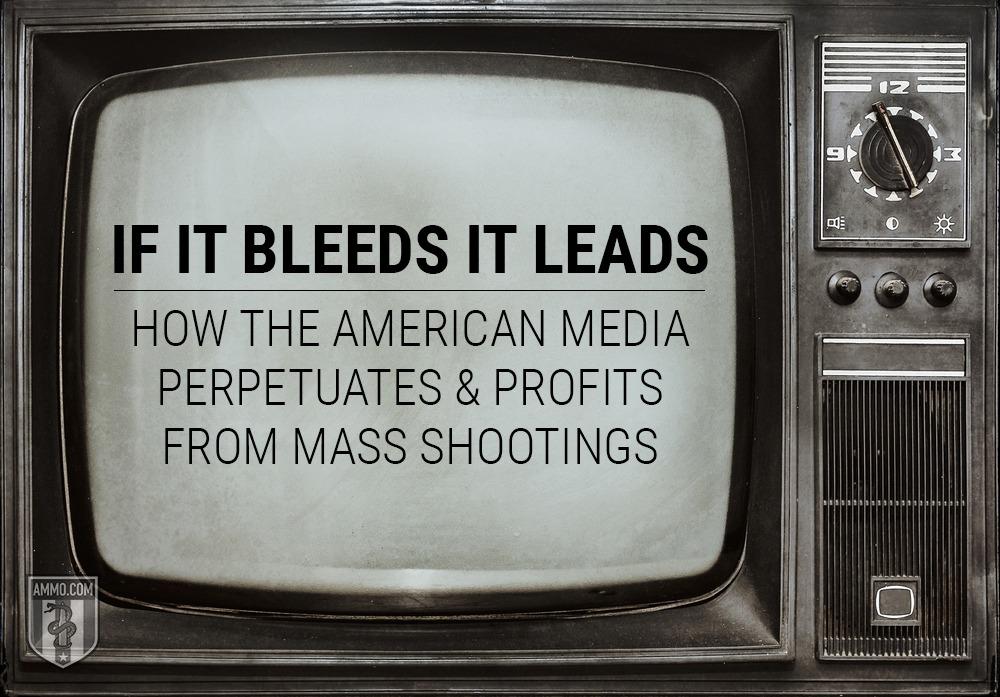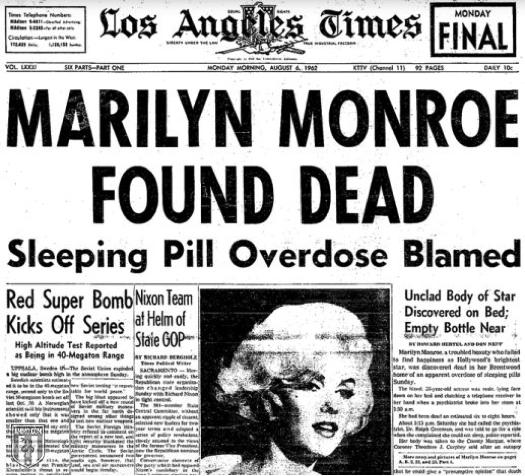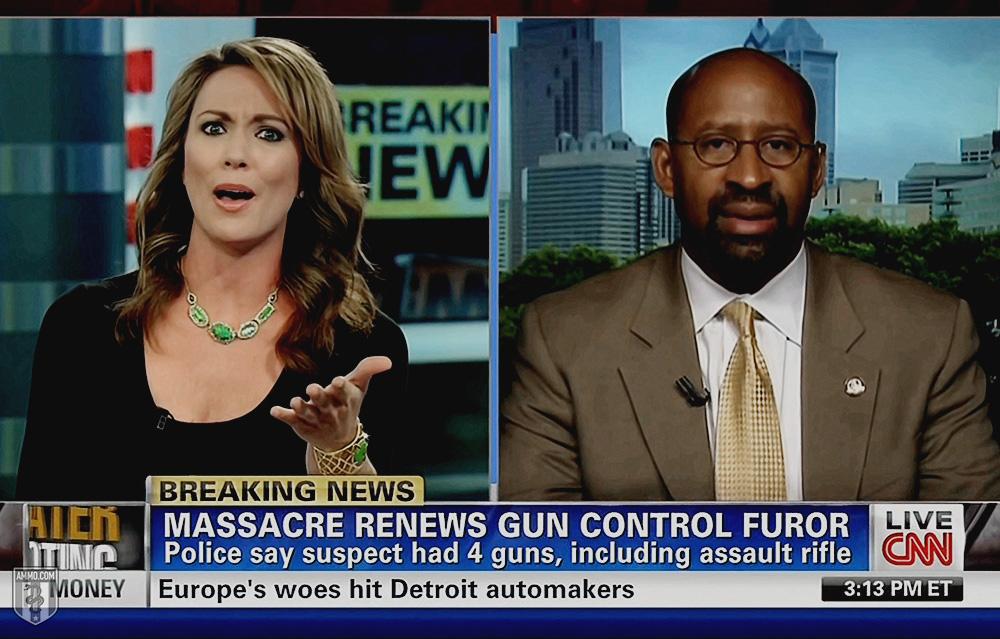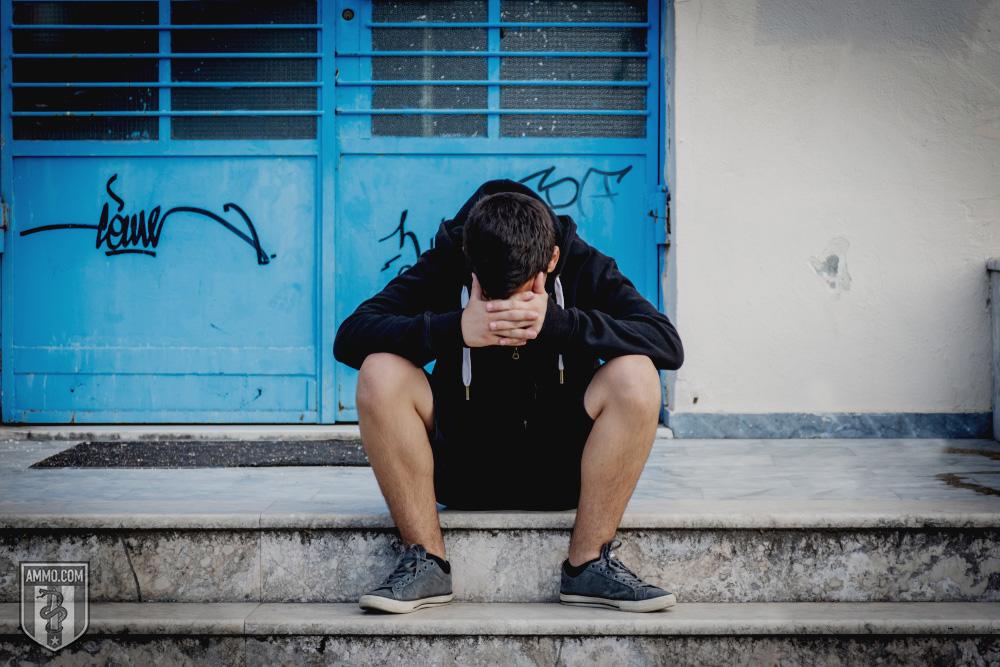If It Bleeds It Leads: How Western Media Perpetuates And Profits From Mass Shootings
Authored by Sam Jacobs via Ammo.com,
“I have repeatedly told CNN and our other media the following if you don’t want to propagate more mass murders: Don’t start the story with sirens blaring. Don’t have photos of the killer. Don’t make it 24/7 coverage. Do everything you can not to make the body count the lead story. Localize the story to the affected community. And make it as boring as possible in every other market.”
Dr. Park Dietz, Forensic Psychologist, on how to stop mass shootings
Video games. 4chan. “Toxic masculinity.” These are just a few of the media’s favorite folk devils when it comes to assigning blame for mass shootings in America. However, there is startling evidence that how the media covers these tragedies makes them culpable in perpetuating future ones.
This might sound like an outlandish claim, but it’s supported by evidence from no less an authority than the National Institutes of Health. It’s related to a well-established phenomenon of copycat suicides known as the Werther Effect. Other countries’ medias have taken steps to minimize the Werther Effect through self-imposed industry standards on suicide reporting, and many of these standards have parallels with the coverage of mass shootings.
The American media currently has no industry standard practices for how to cover either suicides or mass shootings. However, one can easily see the difference between how mass shootings and suicides are covered. Whereas suicides are treated as somber tragedies, mass shootings often have the sensationalism turned up to 11. There’s a detailed discussion of the shooter’s life story, motives and methods. Strong evidence suggests that this both encourages and instructs potential mass shooters.
Statistically speaking, mass shootings represent a tiny portion of all deaths in the United States. For example, 2017 was the deadliest year for mass shootings in America with a total of 117 people killed. For context, 102 people die from automobile accidents every day according to the National Highway Traffic Safety Institute.
Despite the low frequency of these tragedies, the media pays outsized attention to them for self-serving reasons, which are both political and economic: There’s a demonstrated anti-gun agenda amongst America’s media. And there’s the ongoing shift in the media’s business model to attention-based revenue that results in ever-more sensational news coverage and “clickbait” headlines.
The lurid attention to mass shootings is profitable for America’s press, cable news networks, and social media companies – despite the consequences encapsulated by the Werther Effect. Thus a look at the role the American media plays in perpetuating these rampage killers is in order.
What Is the Werther Effect?
Ask yourself: Can suicides be contagious? Some studies say yes. It’s known clinically as the Werther Effect, after Goethe’s novel The Sorrows of Young Werther. This is a particularly important topic in the era of the so-called “mass shooter” and the phenomenon of “suicide by cop.” Researchers at Northeastern Illinois University and Arizona State University found that as many as 20 to 30 percent of all mass shootings are copycat shootings inspired by media coverage of other shootings.
The history of the Werther Effect is quite curious. Goethe’s novel was a cultural phenomenon at the time. Melancholic men were dressing in blue jackets and yellow pants in emulation of the novel’s protagonist, Werther, who was effectively a stand-in for Goethe himself. Some men took their love of the novel one step further by committing suicide with a pistol in the same manner as Werther, who ends his life at the end of the novel after being rejected by the woman he loves. This led to the book being banned in several places.
The term “Werther Effect” was first coined by researcher David Phillips in 1974. Further studies in 1985 and 1989 by Phillips and his team found that suicide rates, as well as other accidents, increased after a well-publicized suicide. The Werther Effect impacts the young and the elderly – but not the middle-aged. Those who commit copycat suicides tend to be of a similar age to the original suicide they are copying.
How Do Copycat Suicides Work?
The timeline for a copycat suicide is generally weeks and months, though in the case of a high-profile celebrity suicide, it might be as long as one year. Some of the most famous suicides that have caused a spike in the overall suicide rate include Marilyn Monroe (that August had about 200 suicides more than was typical for the month) and the Tunisians street vendor Mohamed Bouazizi, whose self-immolation kicked off the Arab Spring. The Netflix series 13 Reasons Why saw a 26-percent increase in searches for “how to commit suicide,” an 18-percent increase in searches for “commit suicide” and a 9-percent increase in searches for “how to kill yourself.” The teen suicide rate itself spiked after the release of the show.
The Werther Effect for mass shootings was found to be 13 weeks by the study conducted by Arizona State University and Northeastern Illinois University.
For his part, Phillips mostly blamed the media. He believed that people who were having a hard time felt that in some way they had been given “permission” to end their life by a high-profile suicide. He compared this with similar studies about other risk-taking behaviors such as taking drugs. People were more likely to engage in such activities if someone else had done so first.
In the case of a mass shooting, potential shooters are not just given a sick kind of “permission,” they are also given a script from which to follow – a ready-made game plan that they can copy and tweak to best fit their purposes. The shooter in El Paso, Texas directly referenced the manifesto of the Christchurch mosque shooter, for example.
Suicides due to the Werther Effect, in addition to being similar with regard to age group, were also similar with regard to method. This is important to remember when considering those mass shootings which are, in effect, a highly dramatic form of suicide. Some shooters seek to get out alive. But for many, the intended effect is being killed by police in the act of shooting other people.
Curiously, the Werther Effect is not an inevitability, but is largely a function of how the media reports on the suicide in question. For example, there were fears that the suicide of Kurt Cobain would lead to a rash of suicides. However, in the media coverage of Cobain’s death, the focus was primarily on the need for mental health care and the suffering of his family due to his suicide. The result was that there was actually a decrease in the suicide rate around the time of his death.
The Media’s Role in Creating the Werther Effect
The United States is anomalous when it comes to coverage of suicide, in that it has no national professional code on how suicides should be covered. Norway forbids publicizing suicide in any way in its media, while other countries have a much more moderate, but sensible, approach. For example, in the United Kingdom, journalistic practice is to not romanticize the death, use lurid photos, or use the word “suicide” anywhere in a headline.
Not only does the United States not have rules against celebrating or glamorizing suicide – either as an industry-standard journalistic practice or by government fiat – the United States media has a lurid fascination with suicide in general as well as suicide by cop and its close cousin the mass shooting.
There is an equally lurid motto for this principle in the American media: “If it bleeds, it leads.”
Note the coverage in the New Zealand media of Brenton Tarrant, the Christchurch mosque shooter. His face is blurred out in all media coverage. The government of New Zealand requested that other countries not show footage from the shooting, which was live streamed. While the jailing of no less than eight people who shared the shooters video is an extreme reaction that infringes upon freedom of speech and free exchange of ideas, it shows just how committed New Zealand was to prevent any glorification of the shooter.
The media does this for two reasons: First, it moves units. Newspapers and other media are businesses and do what creates the greatest profits. However, there is another, more sinister and cynical reason that can be credibly put forward: The American media has a left-wing political agenda that includes the wholesale banning and confiscation of private firearms.
Mass shootings are, in terms of sheer number of deaths, a blip on the radar. The euphemism “gun violence” is often used to mask this, which lumps murders and suicides into the same statistic. While suicides are undoubtedly tragic, they’re not what one thinks of when hearing the term “gun violence.” All told, there were 11,004 gun homicides in 2016. While this sounds like a lot, some context is in order: 34,436 died of car crashes in the United States in the same year.
Neil deGrasse Tyson came under fire for pointing this out – that not only do gun deaths not amount to a lot in the grand scheme of things, but “mass shootings” are even less.
Indeed, what counts as a “mass shooting” is a political game that deliberately excludes mass shootings. Vox, Mother Jones, The Washington Post and the Congressional Research Service all keep detailed records of mass shootings. Each of these deliberately exclude gang violence in their tallies.
For context, a total of 888 people have died in mass shootings since 1982. That’s a total of 1 percent of all gun deaths, approximately two-thirds of which are suicides. In 2017 alone, police killed 1,189. Americans should be concerned about mass shootings and any other topic where public policy might be able to reduce the number of deaths.
But Mark Manson and others have discussed how mass shootings are not only something virtually every American doesn’t have to worry about, but panicking and virally boosting the incidents might also be creating more of them (along the same lines as the Werther Effect). Sam Harris has discussed how new legislation is probably not the answer, but a different view of public social violence is.
It’s worth noting that, like terrorism, the intended effect of a mass shooting is attention and fear. When society reacts hysterically to mass shootings without proportion, it is playing into the hands of the agenda of the mass media as well as the intended shooter.
How the Werther Effect Works in Mass Shootings
That the Werther Effect has some analog with mass shootings is difficult to dispute. First, mass shootings are largely a product of the post-1968 world – i.e., the world after gun control. What’s more, shooters have studied the actions of other shooters to understand how to commit their crimes.
FBI Director James Comey certainly believed that media predictions of mass shooters contributed to the phenomenon in the United States. After the Orlando shooting, he said:
“You will notice that I am not using the killer’s name and I will try not to do that. Part of what motivates sick people to do this kind of thing is some twisted notion of fame or glory, and I don’t want to be part of that for the sake of the victims and their families, and so that other twisted minds don’t think that this is a path to fame and recognition.”
More than simply a desire to see these shootings not reported, the FBI is actively investigating potential copycat criminals in the wake of mass shootings, such as the ones that took place in Dayton and El Paso. A study conducted by Mother Jones located no fewer than 74 copycat killings (attempted or executed) of the 1999 Columbine shooting alone. The casualty toll of these attacks included 89 deaths, 126 injuries and nine suicides.
There is more than just circumstantial evidence to suggest that there is a Werther Effect for mass shootings. Indeed, this has been studied. The National Institute of Health produced a meta-study of mass shootings that concluded what most people probably already suspect: that there is an imitative effect. It’s not that mass shootings are “contagious” as such. Contagion is something belonging to the world of epidemiology and virology, not psychology. It’s that mass shooters tend to imitate one another.
Where do they get the information to imitate one another? While the National Institute of Health hedges a bit on whether or not mass shootings are “contagious” in the same way that other violent and dangerous behaviors are, it is very clear that the media plays a key role in disseminating the information about how to commit a mass shooting.
Gang bangers might observe how to commit a mass shooting first hand, but we know of no mass shooter in a non-gang related sense who witnessed a mass shooting personally, then used that knowledge to commit his own. On the contrary, they learn what they know about mass shootings from the media.
What’s perhaps most interesting is that the NIH study found that it didn’t matter if the portrayal of a mass shooting was even factual or realistic to be an influence on a mass shooter. Even merely describing the behavior of a shooter had the effect of influencing later shooters.
The report specifically called out the media’s portrayal of mass shooters, however. They cite the reporting ad nauseum of the personal life details of the shooter, his crimes, and even the manifesto (an increasingly de rigeur part of any mass shooting) that have an imitative effect on future mass shooters.
Government censorship need not be the answer. Consumer pressure as well as a voluntary industry-wide set of standards could literally save lives.
How the Media Portrays Mass Shooters
Consider the portrayal of mass shooters in the media. The very act of being the obsession of the news and social media is a sort of social status attractive to the type of person flirting with the idea of being a mass shooter. The life story of a mass shooter can provide a point of resonance and relatability, as similar criminals tend to fit a similar profile. The portrayal of shooters wielding guns or even looking menacing in photographs projects an aura of danger and toughness that can be attractive to those who are hanging on the edge. Manifestos can inspire further action, especially if one of the goals of the manifesto is to create terror and panic – mission accomplished. Detailed reports of what happened can provide a sort of instruction manual for future shooters.
All of this combined provides a very powerful and attractive cocktail enticing further mass shootings.
Note that the suggestion here is not to ban the reporting of mass shootings. This would also be a mistake. The public has a right to be informed of significant events and mass shootings are no exception. However, the manner in which mass shootings are reported on is the problem – the emphasis on the personal narrative of the shooter, the views that motivated him to commit the crime, and the gory details of his dubious success are what is at issue.
The report from the NIH is unambiguous in its belief that a change in media policy could very well directly lead to a decrease in mass shootings in the United States:
“If the manner with which the media (legacy, new, social) report a mass shooting event plays a role in promoting further mass shootings, changing these reporting methods could decrease imitation.”
The Federal Bureau of Investigation has specifically requested that the media stop naming mass shooters, but this plea has thus far fallen on deaf ears.
There are likewise alternatives with regard to the portrayal of mass shooters in the media beyond tactics like withholding their names or blurring their faces. For example, mass shooters are often treated as dangerous, powerful men. This makes mass shooting attractive to a certain unstable psychological profile. On the other hand, shootings could just as easily be portrayed as the shameful act of a cowardly individual. Coverage could likewise emphasize punishment in cases where the shooter is apprehended alive.
What’s more, the shooter’s rationale could be downplayed in coverage. Descriptions could be very surface, for example “Islamic jihad” or “white nationalism.” Eschewing discussion of the personal and biographical information about the shooter would likewise have a similar effect. The NIH points out that repeatedly reporting years of bullying as the motive portrays rampage killing as the only response to being bullied.
Finally, there is the question of duration and frequency on which mass shooters are reported. When a mass shooting occurs, the coverage tends to be wall-to-wall for days. This certainly belies an agenda on the part of the media. What’s more, coverage of the shooting as it unfolds could be eschewed entirely, which would not only lessen the coverage, but also prevent conspiracy theories arising later when inconsistencies between “breaking news” and the full story arise.
The main thing, however, is to make the coverage as general and nonspecific as possible. This is the best way to reduce the overall “excitement” and “prestige” (such as it is) enjoyed by the shooter and his actions. Even seemingly innocuous terms like “lone wolf” can glamorize a shooter.
How You Can Combat the Werther Effect
No one is suggesting that the Werther Effect is the primary or even the only cause of mass shootings. It is, however, a contributing factor. As such, working against it should be explored as a means of harm reduction overall. Given that mass shootings have only increased since the introduction of gun control measures, it is arguable that working to combat the Werther Effect will do more to prevent future mass shootings than will taking away guns from law-abiding citizens. While violent crime in general is down sharply since the 1990s, mass shootings are up.
One does not have to call upon the federal government to institute speech codes to impact the behavior of the media. Consumer pressure can move things in this direction in the same way that, for example, consumer pressure has largely ended animal testing among boutique cosmetic brands. What’s more, one can begin taking personal responsibility for how one shares information about mass shootings in social media. When one has the urge to share an article about a recent mass shooting, particularly one with gory or lurid details or detailed information about the shooter’s biography or ideology, one can simply choose not to do this. Finally, one can inform one’s friends and family about the Werther Effect of mass shooting media coverage (for example, by sharing this article) in the hopes that they will begin similarly refusing to share this information.
The Attention Economy and the Media
A big contributing factor in the viral spread of mass shootings is not just the increased role of social media in how people get their news. It’s also the decline of a centralized news media. While this certainly has a number of positive attributes (most people reading this probably get a significant portion of their news from alternative and independent media sources), it also has its downside.
For example, legacy media no longer relies on subscribers for the lion’s share of their revenue. Instead, they get their money from page clicks on the Internet, which are then pitched to advertisers as a symbol of their overall strength as an advertising avenue. This means that the business model of the average newspaper or magazine has shifted from getting long-term subscribers to getting as many clicks as possible. Studies have shown that people are far more likely to click on sensationalized news stories and “clickbait” than anything else. What this means is that legacy media has a high incentive to publish the most outrageous, sensational, and lurid version of events when reporting the news.
Mark Mason calls this principle the Kardashian Rule. It is also known as the Attention Economy. Social media, round-the-clock cable news coverage, and both new and legacy media now operating on a page-view economy all contribute to this phenomenon.
Put simply, whatever gets the most attention then spreads the furthest and generates the greatest amount of income for the company in question, be it Facebook or the New York Times. Mass shootings generate big business for the media, so they help to fuel the attention directed toward them.
Refusing to share articles about mass shooters can be one way that consumers begin reversing this trend.
When it comes to the problem of mass shooters and other rampage killers, there is no set of easy answers. This is perhaps what is most frustrating about the problem. However, it is also empowering to realize that small choices made by consumers every day of their lives can start making an impact on how the media portrays mass shooters, and in turn reduce the number of mass shootings in the United States. It might not have the visceral impact of a new, shiny piece of legislation, but ultimately it’s more effective – without trampling on the liberties of others.
A final thought: What do suicides and mass shooters have in common? The common denominator might well be a loss of all hope caused by social isolation and depression. Both underscore the need for a healthy civil society and social connections. In addition to refusing to participate in the viral outrage mill, reaching out to people around you who seem to be having a hard time can be seen as doing your part.
None of this is “sexy” or high profile, but these are arguably the only effective weapons we have to stop mass shootings.
Tyler Durden
Wed, 01/15/2020 – 22:25
via ZeroHedge News https://ift.tt/388kb6m Tyler Durden



